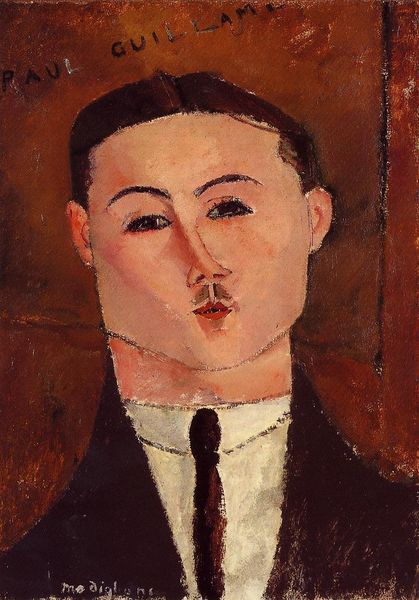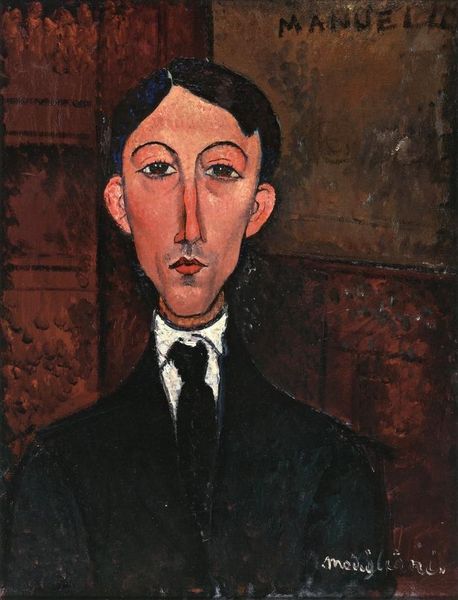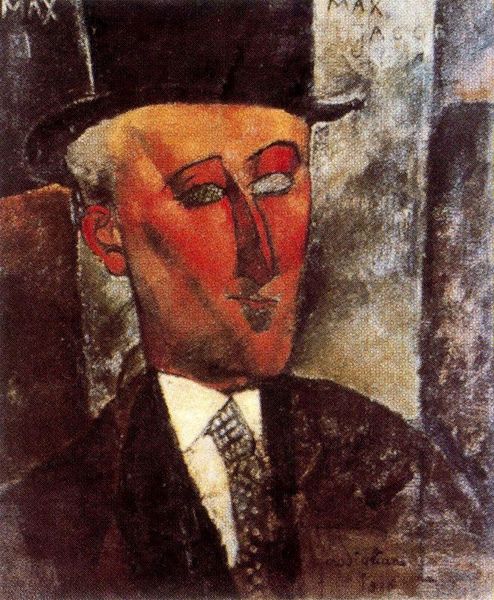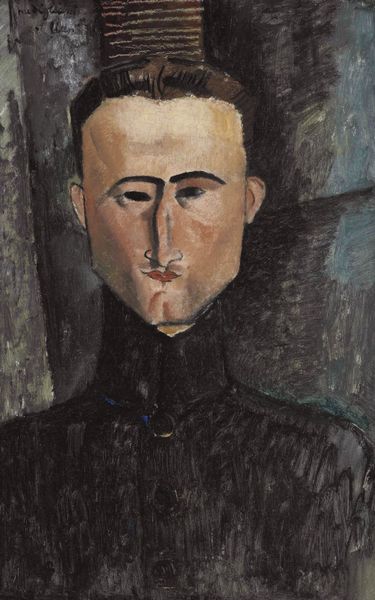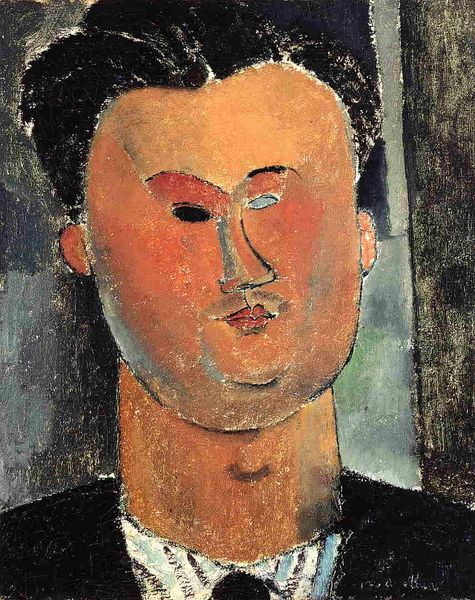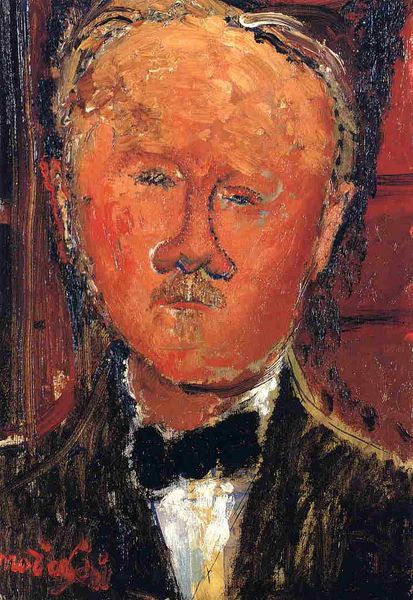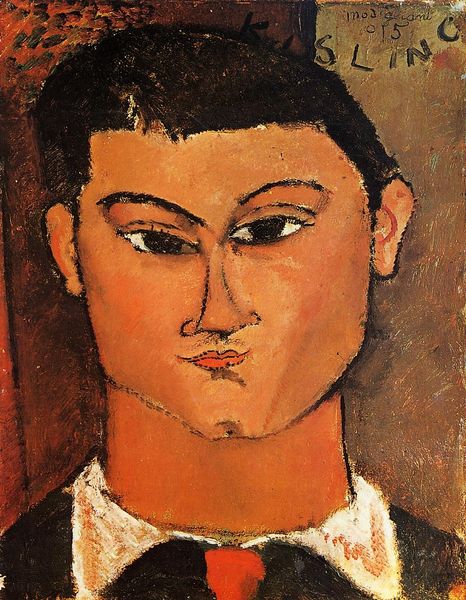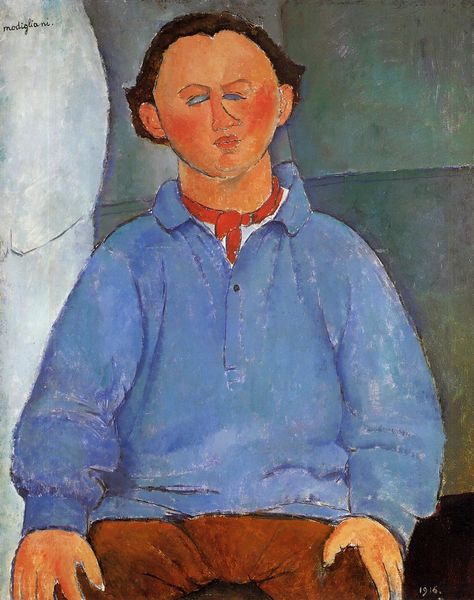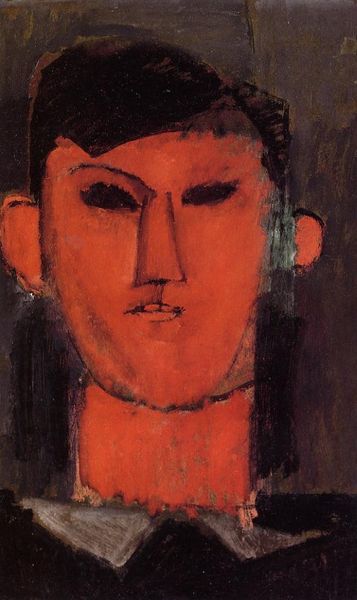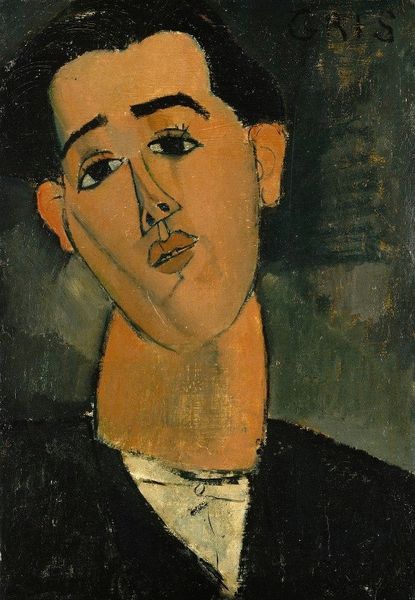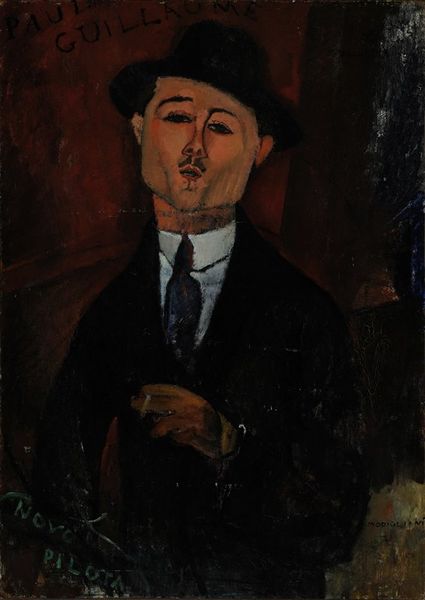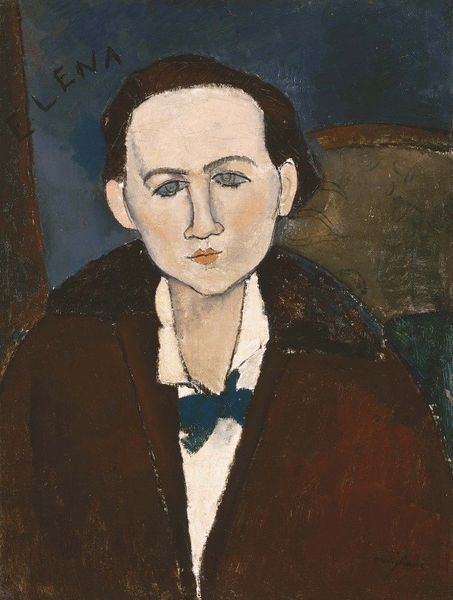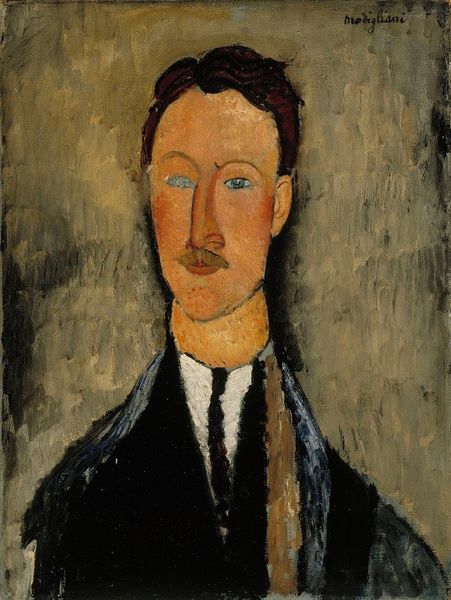
painting, oil-paint
#
portrait
#
painting
#
oil-paint
#
oil painting
#
expressionism
#
modernism
Copyright: Public domain
Editor: Here we have Amedeo Modigliani's "Oscar Miestchaninoff," an oil painting from 1917. The first thing that strikes me is how intensely stylized the subject's face is, almost mask-like. What do you see in this piece? Curator: Immediately, I'm drawn to the eyes – the slightly downward glance, the almost ethereal blue against the warmer skin tones. It's as though Modigliani is giving us access to a specific kind of inner life, melancholic and self-aware. Do you notice the slight asymmetry in the eyes, perhaps mirroring an internal struggle? Editor: I do, now that you point it out! It contributes to that sense of unease, certainly. And the elongated face, the simplified shapes – it’s not a realistic depiction, yet it feels deeply personal. Curator: Precisely. Modigliani wasn't aiming for mere representation. Consider how portraiture, for centuries about commemorating status and power, was radically redefined in the modern era to express psychological truths. The artist abstracts the form to emphasize certain symbolic elements, the color for the warm flesh and healthy blood. In contrast to the cold and business-like uniform of his sitter. What emotional narrative does that evoke for you? Editor: That the sitter might feel trapped, maybe? That tension between outward appearance and inner turmoil really comes through. The painting feels modern not just in style but in its exploration of identity. It seems a portrait not just OF someone, but ABOUT someone. Curator: Absolutely. Modigliani masterfully uses visual language to portray a cultural narrative about the burden of representation, of seeing and being seen. A theme which is perhaps very relevant to society to this day. Editor: That's fascinating. I'll definitely be looking at Modigliani's work in a new light from now on!
Comments
No comments
Be the first to comment and join the conversation on the ultimate creative platform.
